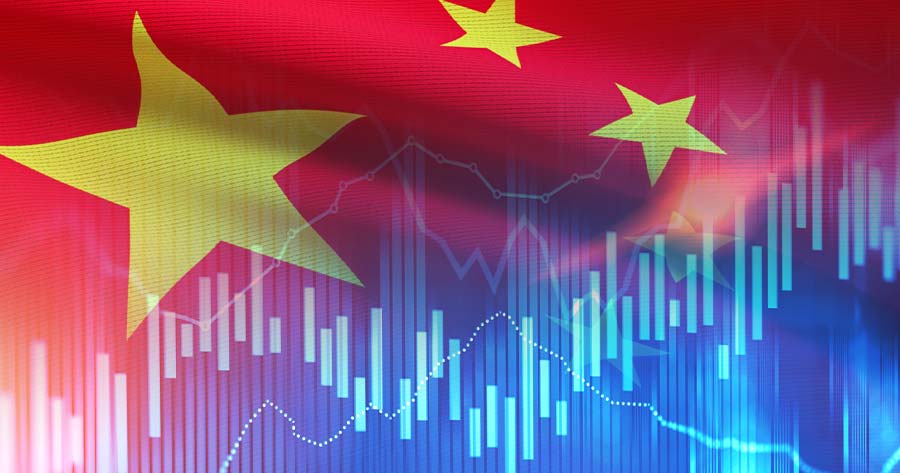The Chinese stock market has been a rollercoaster ride in 2024, showcasing sharp fluctuations and dramatic shifts in investor sentiment. In the third quarter, a significant rally captured headlines, with markets surging almost 30% over three weeks, propelled by government stimulus measures. However, this upward trend has done little to restore foreign investor confidence, who have shown increasing pessimism toward Chinese equities.
Record Exodus Of Foreign Investment
Data from China’s State Administration of Foreign Exchange reveals a staggering record of $15 billion withdrawn by foreign investors from Chinese equities during the second quarter of 2024. This marks one of the largest capital outflows in recent history and underscores a growing sense of disillusionment with China’s economic prospects. Such a mass exit is particularly noteworthy, given that it preceded one of the most significant market rallies in recent times.
The outflow reflects a broader trend: inbound foreign direct investment has plummeted to its lowest levels in over a decade. Investors appear to be cautious, weighed down by a combination of a slowing economy, a burgeoning property crisis, weak consumption patterns, and rising geopolitical tensions.
Stimulus Measures Spark a Rally
Despite the foreign capital exodus, the Chinese stock market experienced a remarkable rebound following the announcement of a robust stimulus package. The government’s efforts included interest rate cuts and a $114 billion injection into the equity market, igniting renewed interest among local investors. Notably, some foreign investors began to re-enter the market, channeling approximately $1.8 billion into Chinese equity assets between September 19 and 25.
This renewed interest was further supported by the technology sector’s performance, which garnered attention from investors like ‘Big Short’ strategist Michael Burry. Yet, while the rally appeared promising, it has raised questions about its sustainability and the underlying economic conditions driving it.
As quickly as the market surged, it has shown signs of weakness in early October. The Hang Seng Index in Hong Kong experienced a staggering 9.4% drop on October 8—the largest decline since 2008 and the second-most significant since 2000. This downturn is attributed to the government’s failure to introduce anticipated new stimulus measures after a week-long holiday, leaving investors disheartened and cautious.
Conversely, Chinese mainland stocks managed a 5.93% gain on the same day, demonstrating some resilience amid broader market turbulence. However, technical analysts, including Lars Hattwig, have cautioned that the recent surge may represent an ‘extreme exaggeration.’ Hattwig pointed out that the FTSE China A50 Index is now at a critical juncture, testing key Fibonacci retracement levels. A significant pullback below the 13,000 mark could signal a bearish shift in market sentiment.
The Path Ahead for Chinese Stocks
Looking forward, the trajectory of the Chinese stock market hinges on several factors, primarily the government’s ability to introduce new stimulus measures and the overall sustainability of the recent rally. Investors will be closely monitoring economic indicators and government actions, as they play a pivotal role in shaping market sentiment.
Also Read: Bitcoin Eyes $100K – Can It Surge 60% From $62,260 This Uptober?
As foreign investors continue to weigh their options, the question remains: Will the recent rally be a fleeting moment of optimism or a sustainable trend that attracts renewed foreign capital? The next few weeks could prove crucial in determining the future of the Chinese stock market and the sentiment of foreign investors navigating this complex landscape.




